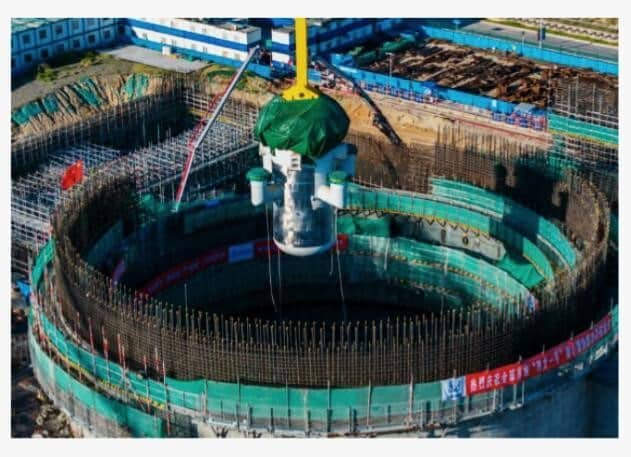As the world’s digital embrace is becoming tighter, power-hungry data centres are fueling an energy crisis to keep up. To sustain, Silicon Valley, AI, and Microsoft are betting big on nuclear power instead. How is this a game-changer?
Data centres, the backbone of our digital world, are energy-hungry, consuming massive amounts of electricity to power the servers, cooling systems, and other infrastructure needed to maintain seamless operations 24/7. As the demand for cloud computing, streaming services, and data storage continues to surge, the demand for a continuous and reliable power supply increases, too. The energy consumption of these facilities, thus, has become a burning environmental concern due to their contribution to the carbon footprint.

In response to these factors, the global industry is focusing on enhancing energy efficiency and sustainability by integrating renewable energy sources. Innovations such as advanced cooling technologies, energy-efficient hardware, and AI-driven management systems are being implemented to reduce power usage effectiveness (PUE). Moreover, some data centres are being strategically located in regions with access to abundant renewable power, like hydroelectric, wind, or solar, to offset their carbon emissions.

Now the question is: Are these enough? Despite these efforts, the challenge remains significant as the exponential growth of data generation and processing continues to drive the need for even more robust and energy-efficient infrastructure.
How AI models contribute to energy-hungry data centres?
The development and training of AI models, particularly large-scale ones, demand substantial computational power, which significantly increases energy consumption in data centres. As these models grow more complex, they require vast amounts of data and extensive computational resources to process this information. This necessitates the use of high-performance servers and GPUs, which consume large amounts of electricity. Data centres hosting these powerful machines often need advanced cooling systems to manage the heat generated, further amplifying their energy usage.
Moreover, the continuous training and fine-tuning of AI models, which involves repetitive processing of data through numerous iterations, lengthen the duration of high energy consumption. Unlike traditional applications that may run intermittently, AI model training can be a continuous, resource-intensive process. This constant demand for computational power and cooling systems not only increases the operational costs for data centres but also has broader environmental implications.
Energy scenario of data centres by 2026
The demand for energy in data centres is projected to double by 2026 due to the rapid expansion of digital services and the proliferation of internet-connected devices. The growing reliance on cloud computing, big data analytics, and artificial intelligence drives the need for more data processing and storage capabilities, significantly increasing energy consumption. Additionally, the rise in remote work, online streaming, and the Internet of Things (IoT) has put extra pressure on data centres to maintain high performance and reliability.
To manage this increased demand, there is a growing emphasis on developing more energy-efficient technologies and sustainable practices, such as using renewable energy sources and implementing advanced cooling systems.
Nuclear energy – Future source of energy for data centres
Addressing the energy crisis in Silicon Valley’s data centres through nuclear power presents a multifaceted puzzle. Nuclear energy offers the power to sustain the region’s technological hub. Solving this puzzle requires innovative approaches, including advanced reactor designs, stringent safety protocols, and transparent communication to gain public trust.
Advantages of nuclear-powered data centres
- Sustainable energy supply: Nuclear power provides a stable and continuous energy supply, essential for data centres that require a consistent and reliable power source.
- High energy density: Nuclear power plants generate a significant amount of energy from a relatively small amount of fuel.
- Low greenhouse gas emissions: Nuclear energy produces minimal greenhouse gas emissions during operation.
- Long-term cost efficiency: Although the initial investment in nuclear power infrastructure is high, the long-term operational costs can be lower compared to fossil fuels.
- Energy security: Nuclear power provides energy security by reducing dependence on imported fossil fuels.
Limitations
- Safety concerns: Nuclear power involves inherent risks, including the possibility of accidents or meltdowns.
- Regulatory hurdles: Establishing and operating nuclear facilities involves navigating complex regulatory frameworks.
- Environmental impact: While nuclear power generates low carbon emissions during operation, the mining and processing of uranium, as well as the disposal of radioactive waste, have significant environmental impacts.
- High initial cost: Building a nuclear power plant requires substantial upfront investment.
- Public perception: Public perception of nuclear energy varies widely.
- Long-term sustainability: Nuclear power relies on finite uranium reserves.
Challenges
- Nuclear waste management: Managing radioactive waste requires long-term storage solutions.
- Regulatory and public acceptance: The development of nuclear power plants faces rigorous regulatory scrutiny and often encounters public opposition.
- Technical integration: Data centres may require adaptations to connect to nuclear power sources.
New nuclear models for data centres
The United States has been increasingly interested in funding research on small modular reactors (SMRs) as a means to provide reliable, low-carbon power for various applications, including data centres.

Other nations have also made significant strides in SMR development. Russia’s RITM-200, initially designed for icebreaker ships, is being adapted for land-based power generation. Similarly, China’s advancements in high-temperature gas-cooled reactors (HTGRs) represent another frontier in nuclear technology.
HTGRs offer high thermal efficiencies and inherent safety features due to their high-temperature operation and passive cooling systems. These international developments underscore a global trend toward embracing SMRs as a versatile and sustainable energy solution for critical applications such as data centres.
Microsoft’s pioneering role in nuclear cloud computing
Microsoft is leading the future of nuclear cloud computing, using its robust cloud platform, Azure, to revolutionise data management and computational capabilities within the nuclear industry. Azure provides the scalable infrastructure necessary for handling complex simulations and massive data sets intrinsic to nuclear research and operations. By offering high-performance computing (HPC) and advanced analytics through Azure, Microsoft enables nuclear scientists and engineers to accelerate their research and development processes, optimise reactor designs, and enhance safety protocols. The platform’s flexibility and security features ensure that sensitive nuclear data is protected while maintaining compliance with stringent regulatory standards.
In addition to its powerful technological platforms, Microsoft is cultivating a specialised workforce to adopt nuclear cloud computing. Through strategic partnerships with leading research institutions and industry players, Microsoft is developing tailored training programs and certification pathways. These initiatives aim to equip professionals with the necessary skills to harness the full potential of cloud computing in the nuclear sector. Furthermore, Microsoft’s investment in artificial intelligence and machine learning research is driving innovation, enabling predictive maintenance, and improving operational efficiencies within nuclear facilities.
India’s nuclear power industry and data centre energy crisis
India’s nuclear power industry is assured of significant expansion as the country seeks to diversify its energy sources and address its growing energy demands. With an installed capacity of about 6.78GW from 22 operational reactors, India plans to increase this to 22.48GW by 2031 by constructing additional reactors and adopting advanced technologies. This expansion is crucial in meeting the energy-intensive demands of India’s rapidly growing data centre industry, which is expected to require an estimated 5 GW of additional power by 2025.
Looking ahead…
Nuclear-powered data centres offer promising infrastructure for meeting the growing demands of computational power while minimising environmental impact. With advancements in nuclear technology, it could provide reliable and sustainable energy sources for powering data infrastructure. Continued research and development are essential to address concerns and optimise the integration of nuclear power in data centre operations, to obtain a more efficient and eco-friendly digital future.
References
- “Tech firms claim nuclear will solve AI’s power needs – they’re wrong ” by Jeremy Hsu
Author By: Vinayak Ramachandra Adkoli holds a BE degree in Industrial Production and has been a lecturer in three different polytechnics for ten years. He is also a freelance writer and cartoonist.









